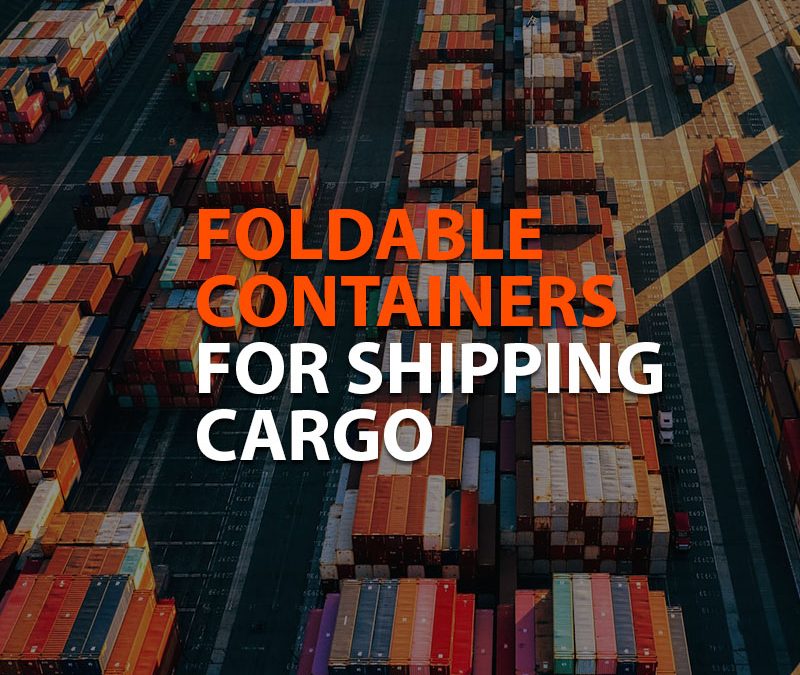A foldable cargo container looks like a traditional container, but it offers the opportunity of saving space when it’s not being used. This type of container can be folded vertically and horizontally with the port’s standard machinery and, of course, handled with container spreaders.
Why do we need to save space in shipping cargo?
The foldable container appears for one main reason: saving space.
The logistics of returning empty containers after unloading their cargo to their originas not been looked at from the point of view of economic savings and, as a consequence, an improvement of the environment.
Approximately 40% of shipping cargo trips only carry empty containers. Many times, the world’s ports and container yards are clogged up by empty containers, causing container shortages and an increase of custom fees at other locations.
According to a Bloomberg report, about 27% of the 20-foot equivalent shipping containers that passed through the world’s ports were empty — contributing to about $20 billion in costs for the industry. In short, moving empty containers is a costly affair, both monetarily and ecologically when CO2 emissions from transport and industry are at their highest.
“Thanks” to the recent supply-chain crisis, major carriers and retailers have been forced to rethink how they transport goods. So, the use of foldable containers looks like a win-win scenario. The space saving possibilities when empty containers are stored in this way are enormous. Space requirements for warehousing and logistics operators will be drastically reduced, as will container handling costs. And we cannot forget the reduction of the carbon footprint that the use of these containers will entail.
Then, if these type of containers are so good for everybody, a question comes to mind:
Why aren’t foldable containers used all over the world?
Jim Haggeman, current president of A.P. Møller-Mærsk Group, said about this topic “Is the dream of the shipping industry for a long time”. But, because of the complexity of the carriage of good’s sector and the highest initial investment that foldable containers represent compared to the traditional ones, three main issues arise about why this has not happened yet: route, operation and state of the art.
Route: It’s easier to use this type of container in back and forth routes, because its advantages are very clear to see and calculate. The problem is that this type of trip is made for short or local journeys. On the other hand, the large shipping companies, which make long commercial voyages, say that they would need a large part of their fleet to be foldable containers in order to benefit from its advantages. These big companies should convert their fleet to foldable containers little by little, and/or to start implementing them in their commercial routes.
if it’s as easy as it sounds, why haven’t they implemented it yet? Let’s see the operation.
Operation: Folding and unfolding operations at the port, involves an additional step, so the time and cost savings provided by a foldable container had to be, economically, worth it. So, for the potential savings to be obtained, is it worth doing the additional operations necessary to operate a foldable container? Let’s see the state of the art.
State of the art: To this day, there are different companies that are developing this type of containers, but for the lack of time and experience in the market, they can not answer if it is worth it at all. Over time, it will be possible to know exactly how many years of useful life a foldable container will have, how much it will be necessary to invest in its maintenance, how much it will reduce port collapses and how much it can reduce the carbon footprint.
Fortunately, there are innovative companies that decide to take risks and adopt the foldable container, and answer these questions in a real way. For example, Navlandis, spanish innovative foldable containers company, to incentivize the use of these containers, they remove the initial investment in their products and their foldable containers are priced based on the savings the other company achieves by using their containers.
If u want to know more about the most common types of containers, check out this article → THE 8 MOST COMMON TYPES OF CONTAINERS






Your Blog is very interesting. Thank you for sharing. I really thank you for giving us better information about this service. Good luck with the upcoming blog.
Thanks.